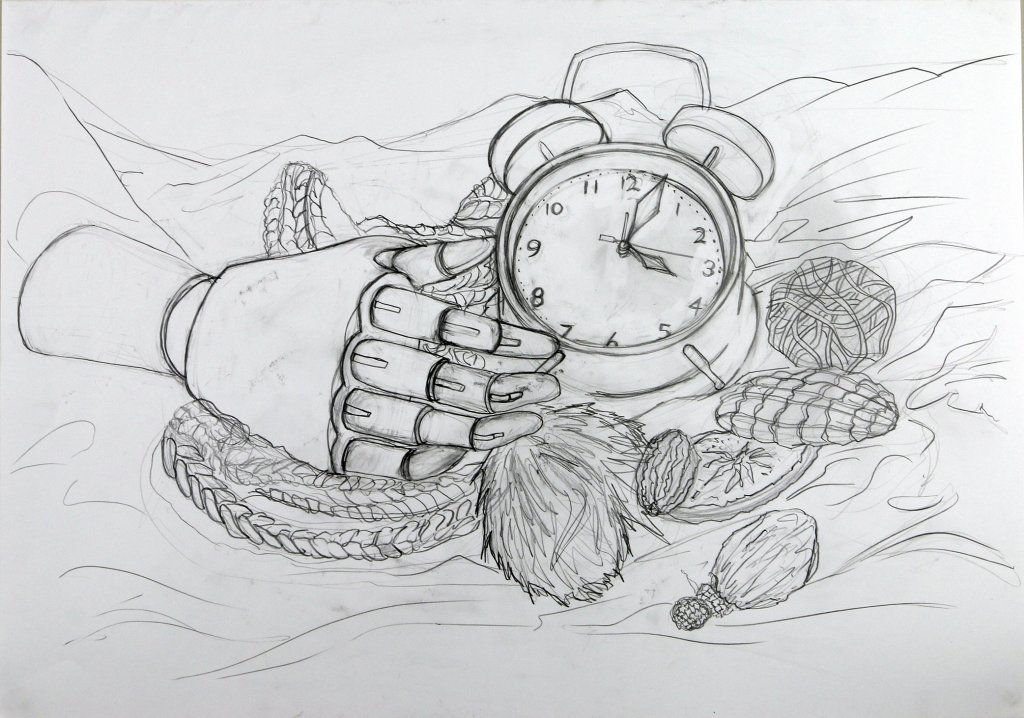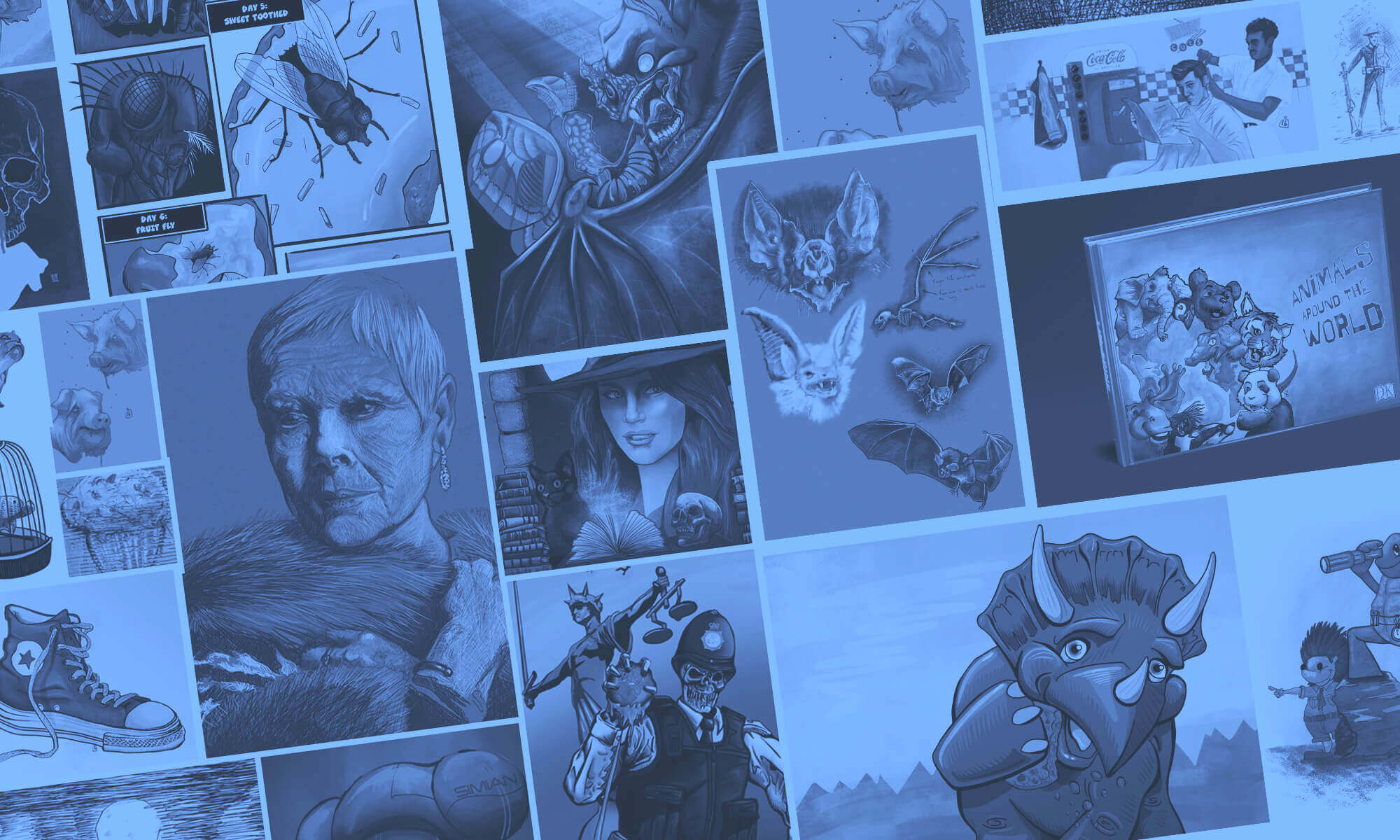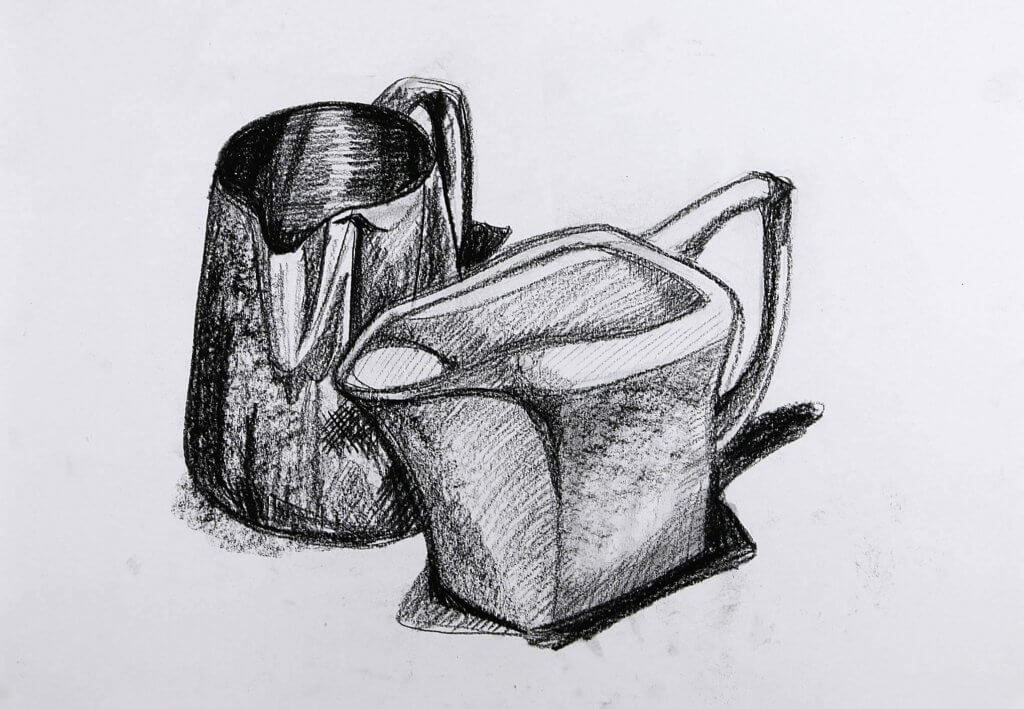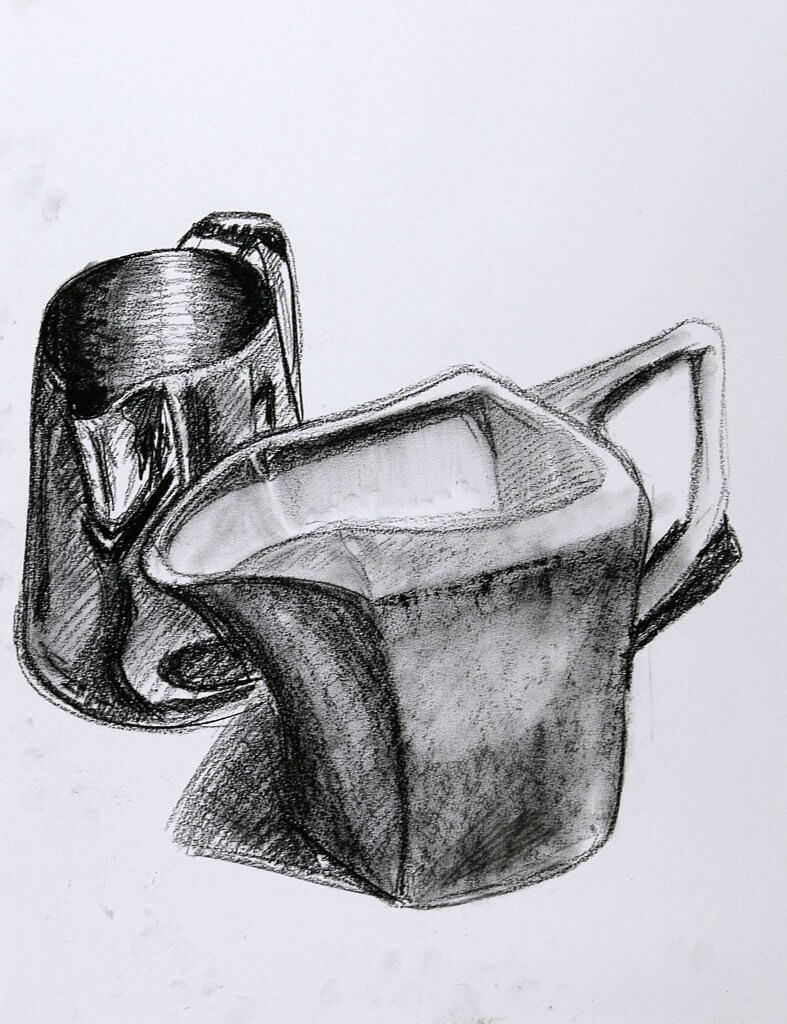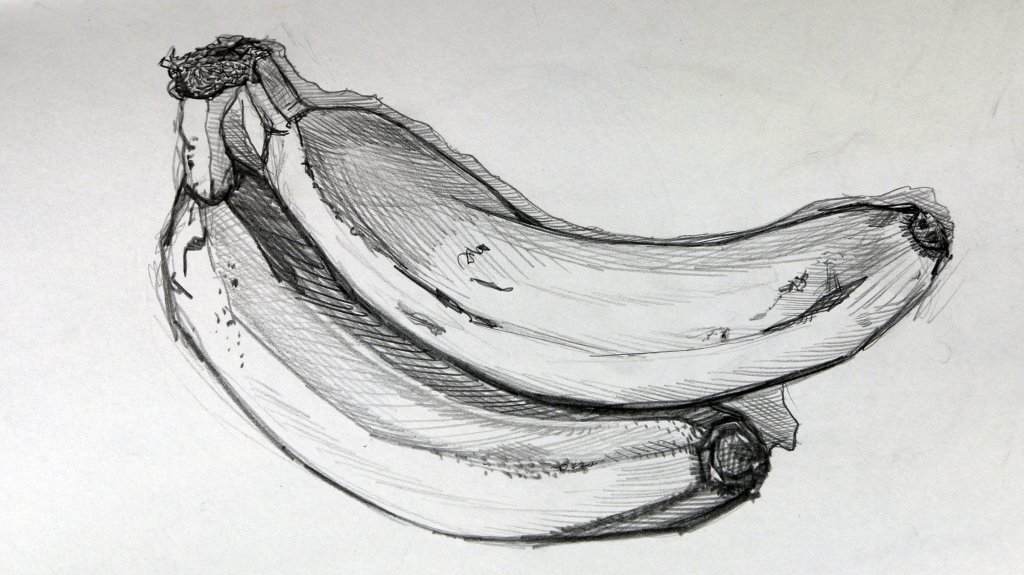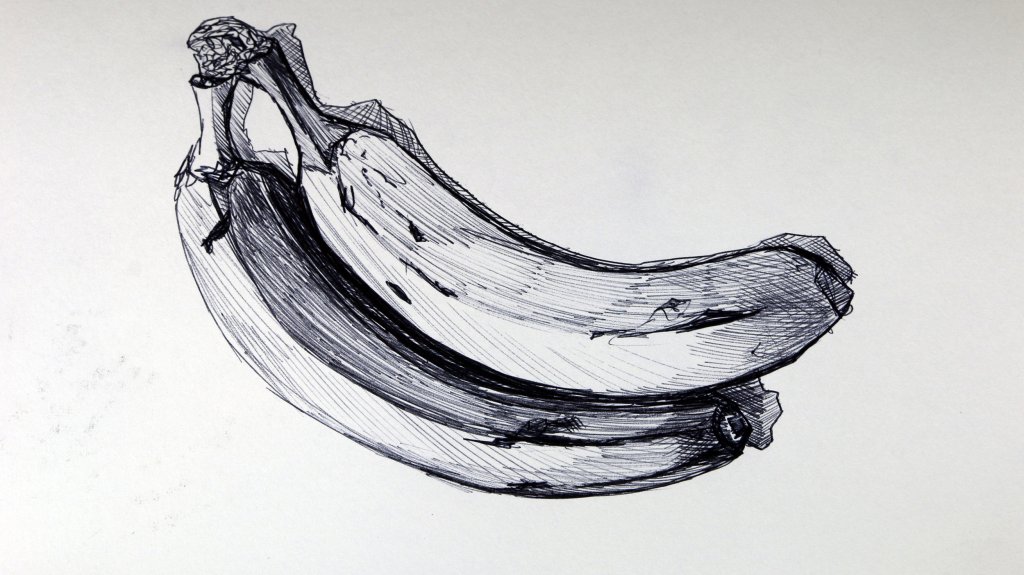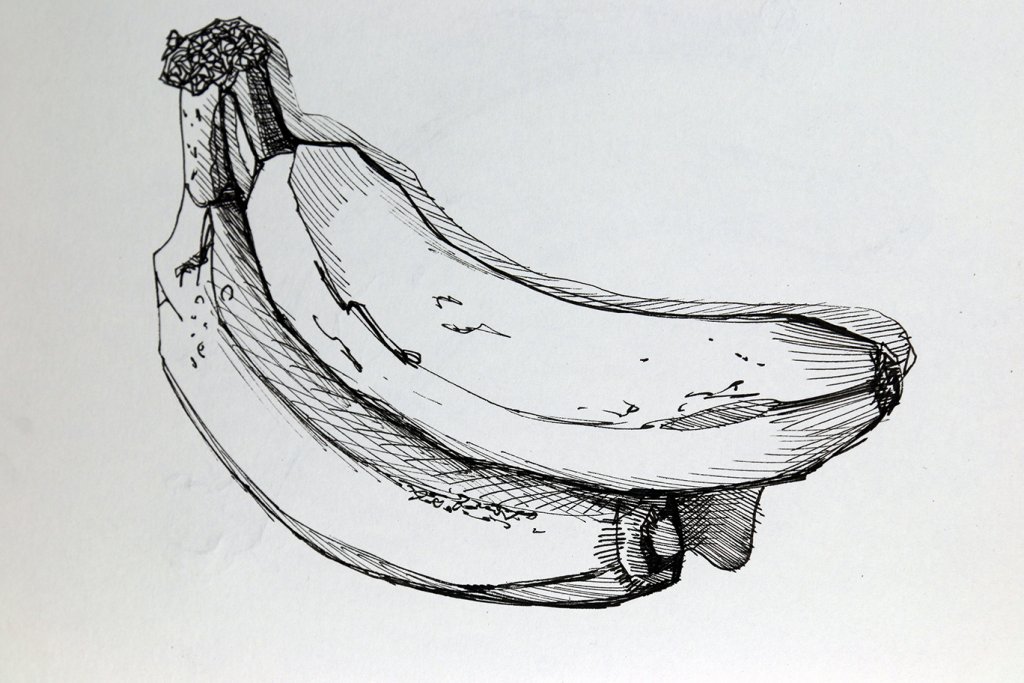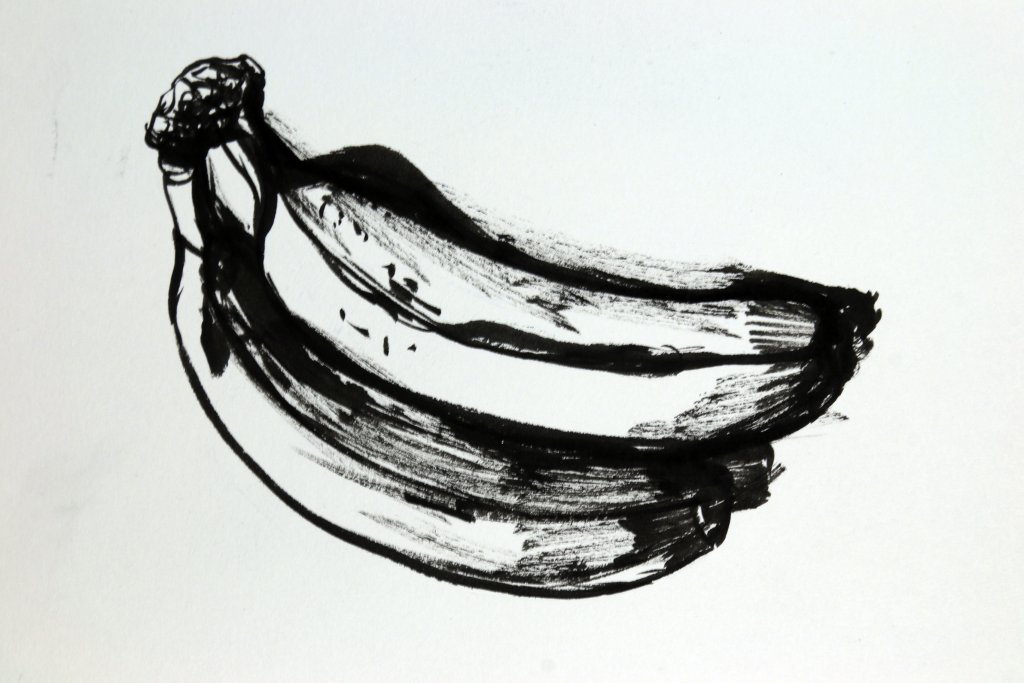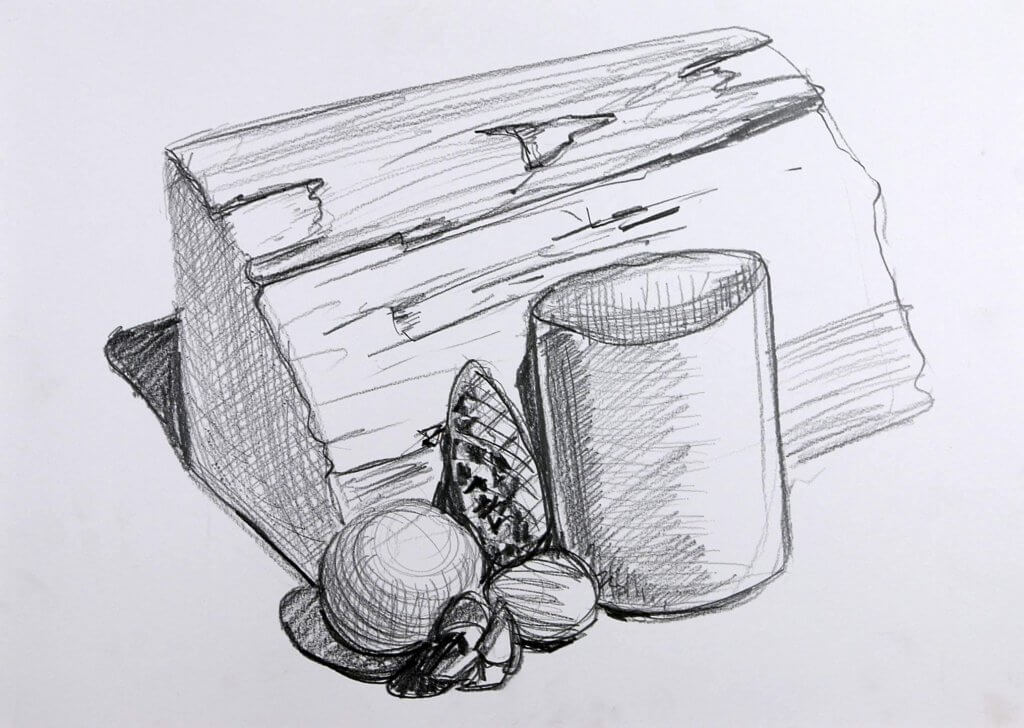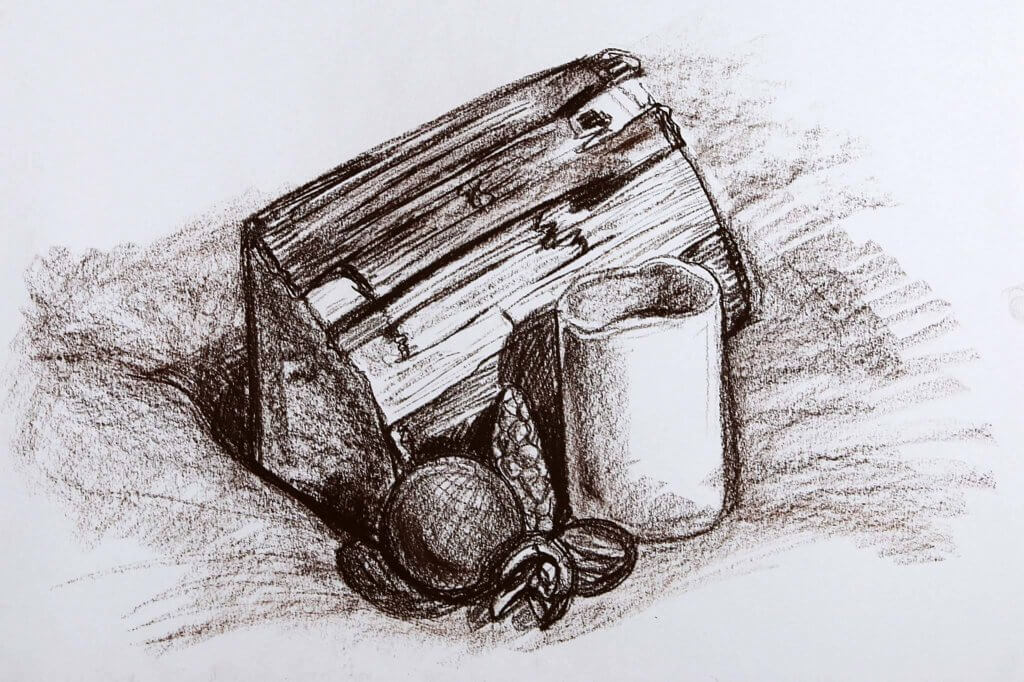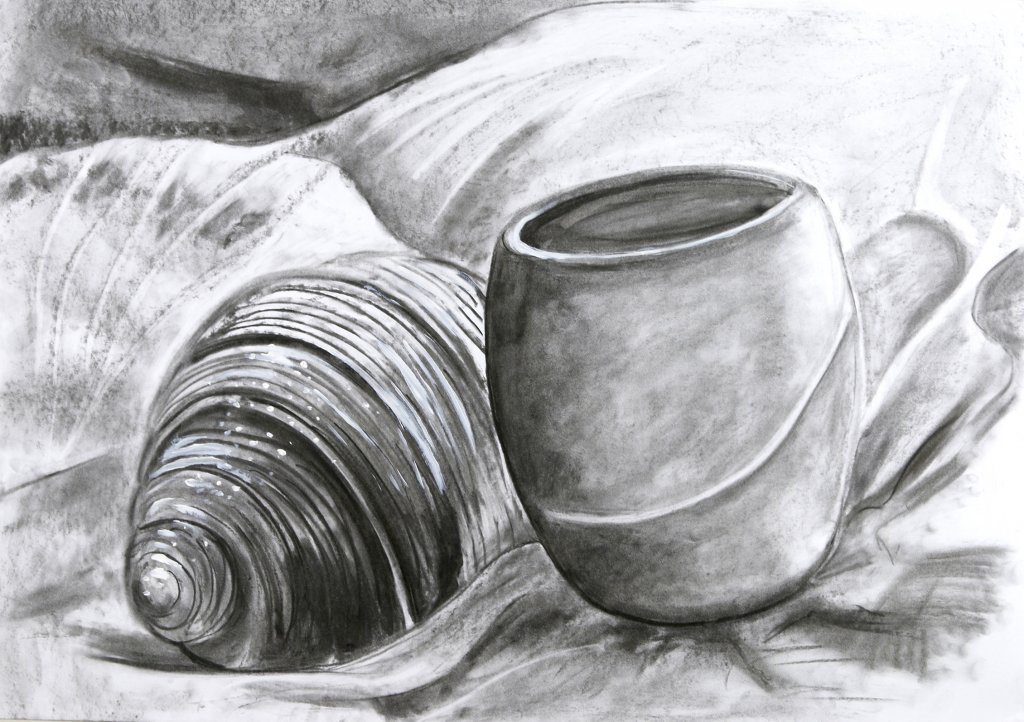For this exercise I was asked to find a group of objects ad arrange a still life to draw, I wanted to explore line weight in this image, I was hoping I could vary my marks thickness and intensity to describe both light and the solidity of their structure.
I chose graphite pencils to do this as they offer a relativity consistent line weight when kept sharp an as they get duller produce a wider mark.
Using a softer approach I sketched in the form of the objects, trying to remain mindful of my light source and the surface I was trying to capture.
once I had the composition mapped out on my paper I worked in heavier lines under the under drawing, as in the exercise guidelines tried to work through objects, this helped me to understand the objects form and shape, this was easier with the man made objects, such as the clock and artists hand as they was comprised of obvious shapes, the more organic items are harder to predict.
I tried to keep line weights thin where light would reflect, and conversely thick where they would not, these were really quite difficult rules to follow, I was still trying to capture shapes even with the aid of my loose under drawing. A more methodical and strict passes would probably be a better approach if I was to repeat this exercise, all in all I was happy with the outcome, while the drawing is still pretty rough around the edges and didn’t quite capture the lighting as I had hoped. I feel I learnt a little about the importance of my approach, accuracy and structure rather than looseness and spontaneity, and how that relates to presentation of the resulting artwork.
